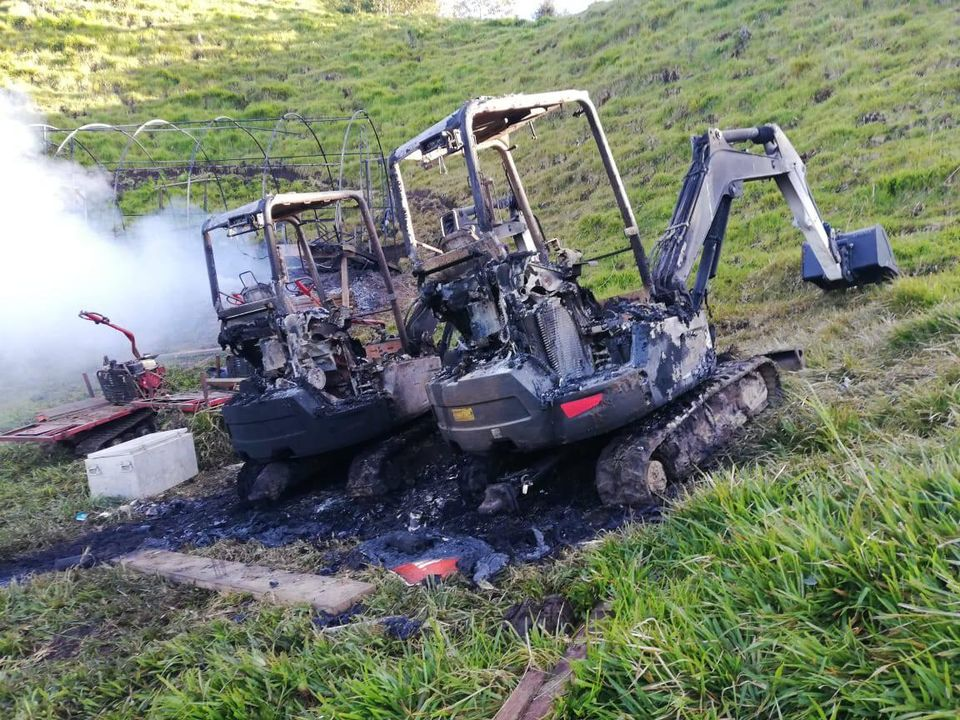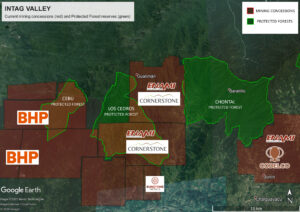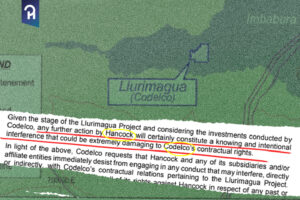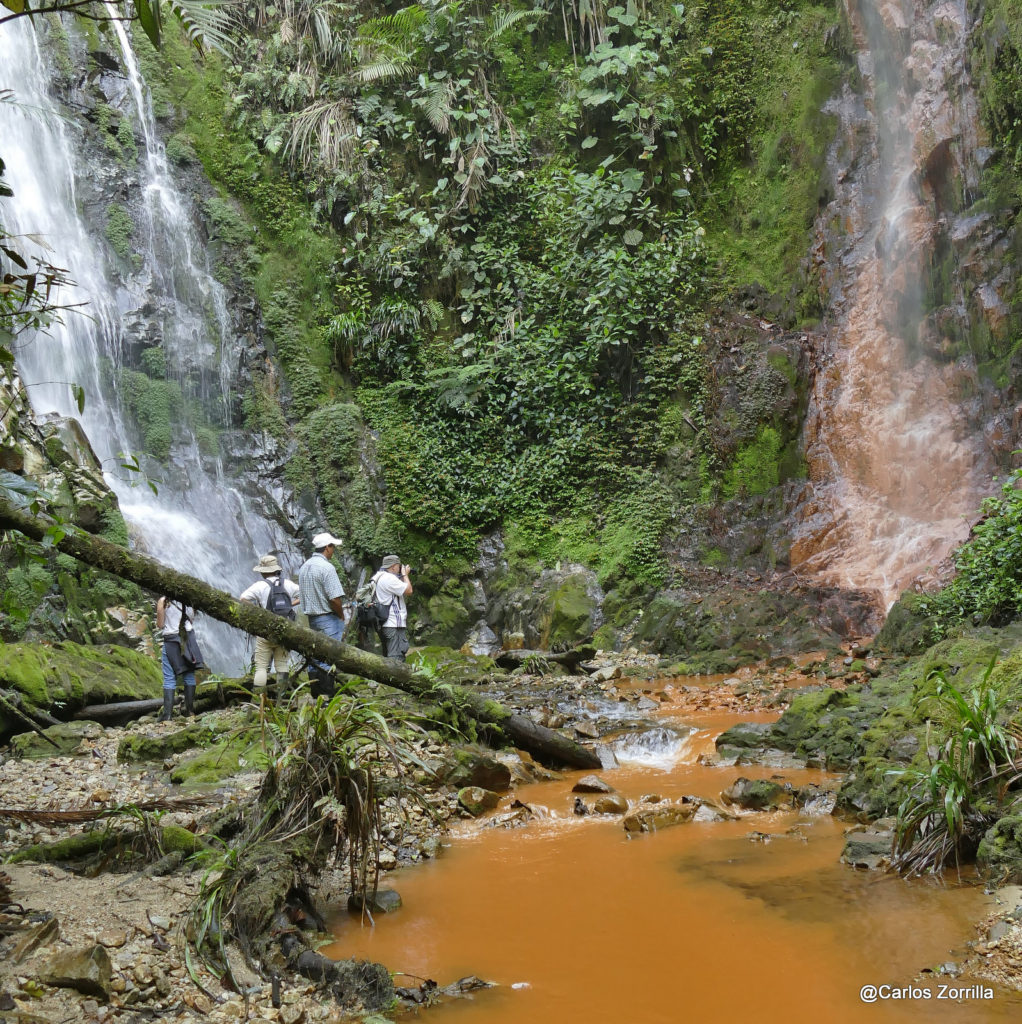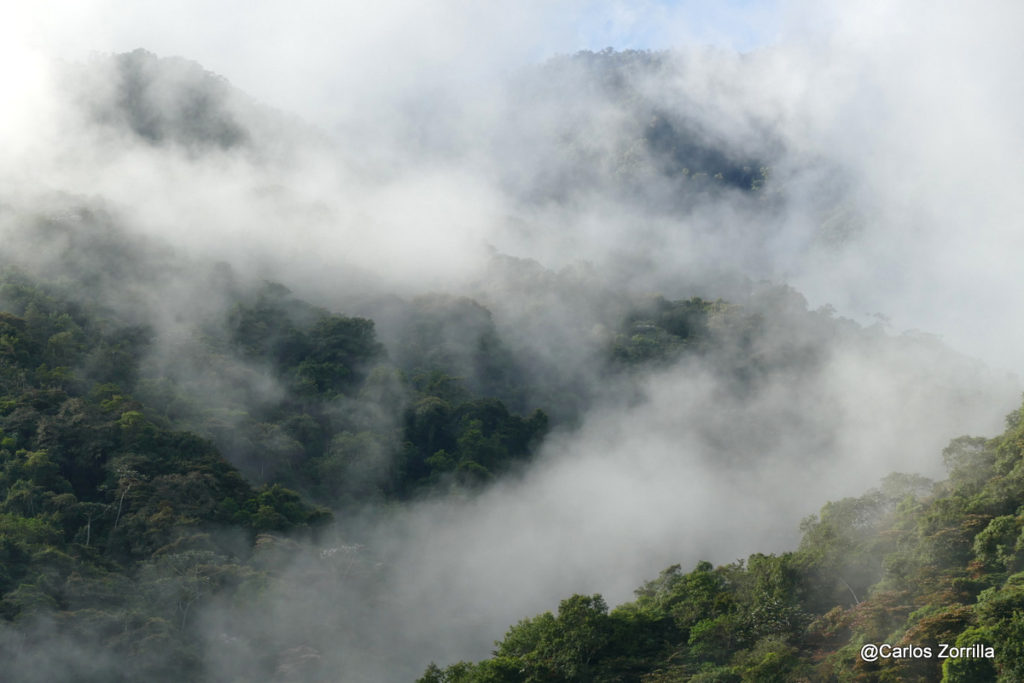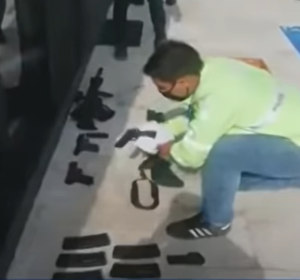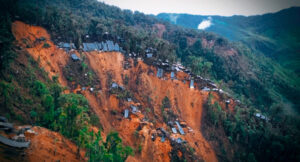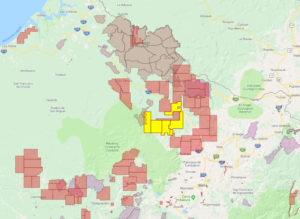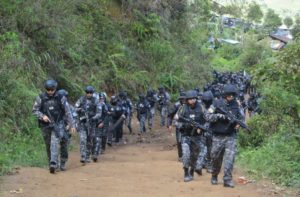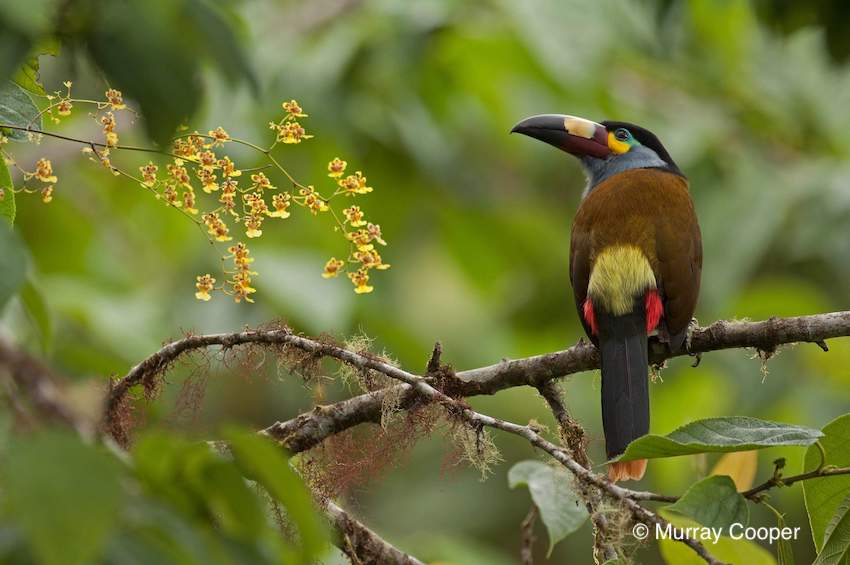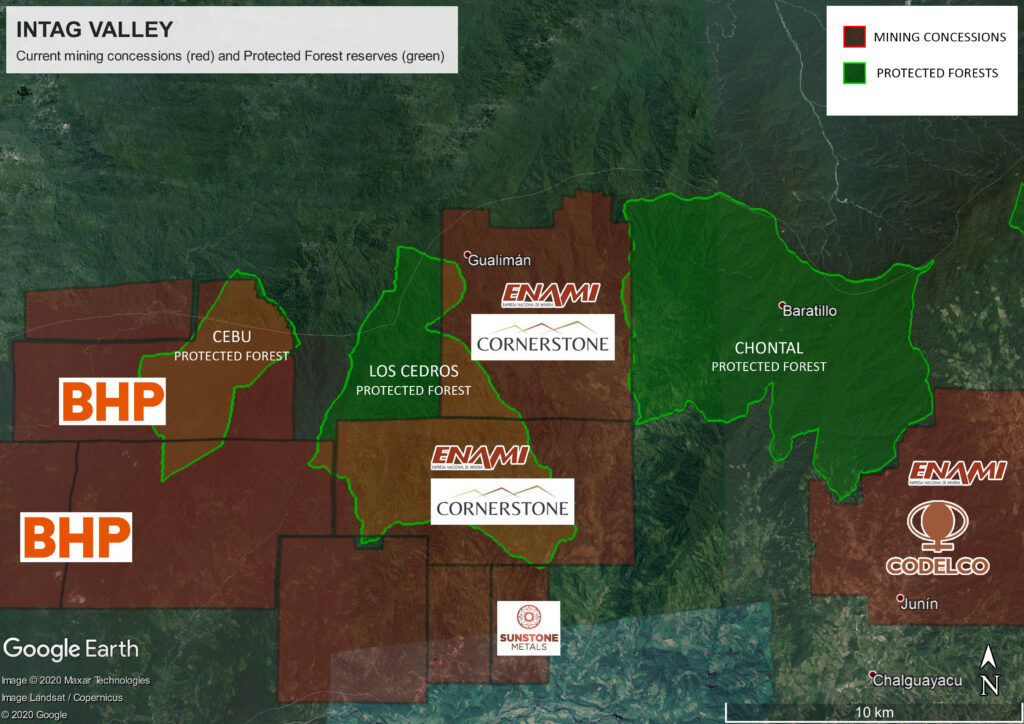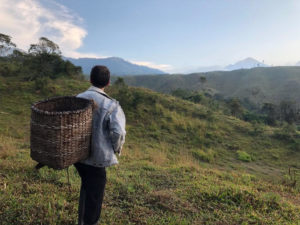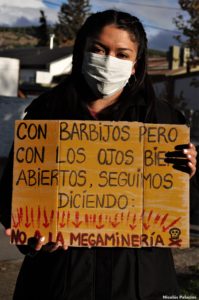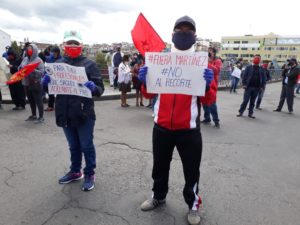First published in Green Left by Anthony Amis
In 2008, Ecuador was the first country in the world to enshrine the rights of nature in its constitution. But, as Anthony Amis reports, international mining companies have been given the green light to exploit the country’s copper and gold reserves.
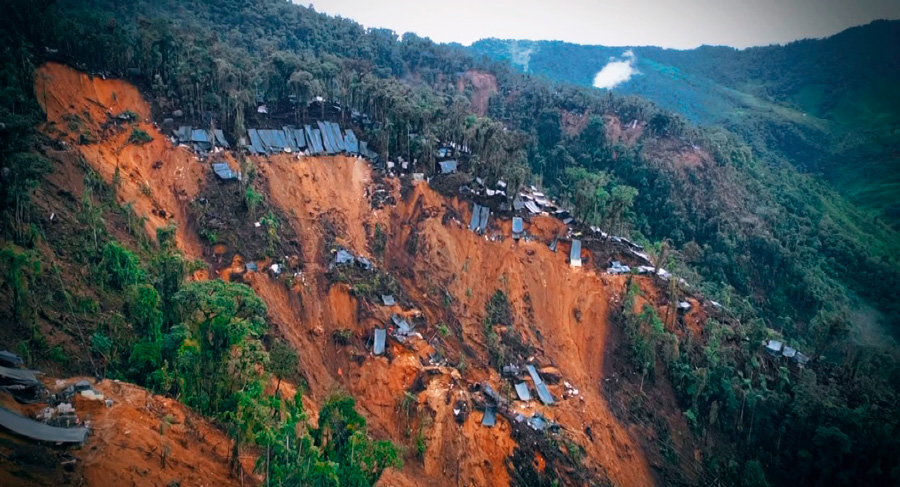
The Ecuadorian government is desperate for foreign capital injections to ease its weakening economy, caused in part by falling oil prices.
The small South American country has become a magnet over the past four years for mainly Australian and Canadian mining companies wanting to cash in on the desperation and mine its untapped mineral resources.
Mining companies have arrived in Ecuador, largely after its copper and gold reserves. “Copper is the new iron ore”, according to one Australian mining executive. Companies are already designing their marketing strategies around the need to mine copper to supply the world’s renewable energy sector.
For most of Ecuador’s history there has been small-scale gold mining. The country has not been exposed to the large-scale mines that have been pushed forward in neighbouring countries, such as Chile, since the 1970s, or Peru in the 1990s. This situation is rapidly changing.
In 2009, the government of Rafael Correa (who was president from 2007-17) enacted Ecuador’s Mining Law and in 2010 created the national mining company ENAMI. The new law however, was seen as a major disincentive to multinational companies, because of a constitutional mandate that suspended the granting of new mining concessions and the expiration of several existing concessions. It was also unpopular due to a windfall tariff of 70% on the difference between the sale price and baseline pricing.
Indigenous opposition
Indigenous groups also opposed the law and mining in general, particularly in the Amazon basin, and big protests occurred in 2007 and 2009. Mass protests by the Confederation of Indigenous Nationalities of Ecuador (CONAIE) also occurred in 2012, culminating in a march to the capital, Quito, in March 2013.
The decision to auction off 3 million hectares of the Amazonian rainforest in the Yasuni Nature Reserve to Chinese oil companies in 2013 further raised the ire of indigenous groups. Ecuador, at the time, had a US$7 billion debt to the Chinese Government.
Some refinements to the Mining Law occurred in 2012 and in 2015 the Correa government created new mining investor-friendly taxes and government incentives and policies to further attract mining. These included the creation of the Mining Ministry (now the Energy and Non-Renewable Natural Resources Ministry).
By March 2016, guidelines for granting metallic mining concessions across the country were created. Local communities and, in particular, indigenous communities, were kept in the dark as to these developments.
Moreno's mining boom
In May 2017, Lenin Moreno came to power and in 2018 the 70% windfall tariff was lifted by his government. Moreno went cap in hand to the International Monetary Fund for a US$10bn package of loans, which meant cuts in government spending. Mining was seen as a means of generating revenue and was expected to bring in US$715 million of taxes for the government by 2021.
Many conservationists first became alerted to the mining company “invasion” in 2017 when volunteers at the 5000ha Los Cedros Reserve, located in the northwest of the country noticed forest disturbances on the edge of the reserve, which they attributed to illegal miners.
Los Cedros was created in the late 1980s through a grant from the Australian Government’s AusAID program and contains some of the most biodiverse forest on the planet. It has been fiercely protected since that time, with 1200 scientists from around the world supporting its long term protection from mining.
After conducting further research, campaigners soon realised that 68% of Los Cedros had been under a mining concession for several months to Canadian mining company Cornerstone Capital Resources.
More investigations followed and the alarming discovery was made that the concession over Los Cedros was only the tip of the iceberg. A third of the entire country of Ecuador (7.17 million ha) had been opened up to mining concessions, with a massive amount of concessions on protected forests and indigenous lands.
Australian mining interests
Melbourne Rainforest Action Group formed in 2018 to research which Australian mining companies were investing, exploring and ultimately mining in Ecuador.
The company with the largest number of concessions (more than 70) is little-known Brisbane-based exploration company Solgold. Solgold had been exploring in Ecuador since 2011, so had the edge on other companies by establishing a foothold in the country. Their prized asset was a concession located in the north of the country called Cascabel, which had initially been “owned” by Cornerstone, which kept a 15% interest in the concession.
Solgold CEO Nick Mather was involved with Waratah Coal, one the first companies to propose mining in Queensland’s Galilee Basin. Waratah was snapped up by Clive Palmer in 2008 and Mather went on to help develop the coal seam gas industry in Queensland. Australian miners BHP and Newcrest Mining also have an interest in Solgold, each owning 14% of the company. BHP also has further mining concessions in north-western Ecuador, very close to Los Cedros. Their exploration was resisted by local communities in the Intag Valley and BHP raised the ire of many after their exploration activities badly polluted the Manduriaca River.
Melbourne-based Newcrest Mining’s main interest is in the south-east of the country, in the headwaters of the Amazon. Production began this year at a massive underground mine, Fruta Del Norte, which Newcrest has a 32% stake in. The company developing the mine was the Swedish firm, Lundin Mining.
Forty kilometres north of Fruta del Norte, production has also just started at the huge Mirador mine, owned by Chinese firms China Railway Construction Company (CRCC) and Tongling Nonferrous. This mine, also in the headwaters of the Amazon, plans to have the world’s tallest tailings dam, three times higher than any other.
In light of the disastrous tailings dams collapses in Brazil over the past few years, there are very real concerns that a similar dam collapse at Mirador could destroy thousands of kilometres of waterways in the Amazon.
Further investigations found that Australian mining magnates Gina Rinehart and Andrew “Twiggy” Forrest were also active in Ecuador. Rinehart’s company, a subsidiary of Hancock Prospecting, Hanrine, owns several concessions just south of Cascabel and Forrest’s company Fortescue Metals Group (FMG) owns a swath of concessions throughout the central and southern areas of the country. FMG’s concession ownership in Ecuador (about 70) is second only to Solgold, as far as Australian companies go, although its on-ground activities have, so far, been limited. FMG has been active in Ecuador since June 2016.
Gina Rinehart
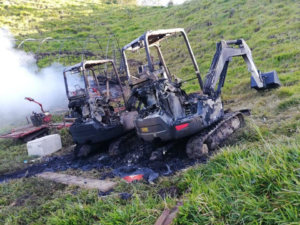
Hancock Prospecting first visited the country in September 2016. Just before concessions were granted to Hanrine in early 2018, a gold rush occurred on one of its concessions called Imba 2.
Up to 10,000 miners from a dozen countries soon flooded into the concession near the small community of Buenos Aires. The gold rush was huge news in Ecuador and it soon became apparent that the illegal miners were also under the thumb of local mafia cartels.
After 18 months, and the reported murders of a number of miners by organised criminals, two thousand troops were sent in to clear out the concession in July last year. Millions of dollars of damage to the concession was reported with some saying that the “foreign” owner of the concession should be held responsible for some of the clean up and security costs. El Comercio reported on August 26 that Hanrine's mining camp near Buenos Aires was set ablaze on August 25.
In August, the media reported that Hanrine’s general manager of operations in Ecuador, Carlos Miguel, had been arrested on arms charges. Miguel’s security company was contracted to provide security for the Ecuadorian embassy in London, a month after WikiLeaks founder Julian Assange entered it. There are suggestions that Miguel was arrested because of a dispute between Hanrine and the Chilean and Ecuadorian Government’s over control of a major potential mine called Llurimagua, again in the north west of the country. An offer of $400m had reportedly been made by Hanrine, which supposedly would buy out the Ecuadorian Government’s share.
Other Australian companies involved in Ecuador include Perth-based Sunstone Metals, which owns two concessions in the north and south of the country, with one directly bordering Los Cedros.
Another Perth-based company, Titan Minerals, recently took over the Canadian company Core Gold, which owns a processing plant and concessions in southern Ecuador, and Tempus Resources which owns two mining concessions in rainforest in close proximity to the Fruta Del Norte mine.
Local resistance to the mining and exploration is ongoing. Ecuador is a very volatile region. A Chinese-owned mine called Rio Blanco was shut down in 2018 after being fire bombed. Numerous communities are fighting back over loss of control of their lands, including their drinking water supplies.
Solgold has been the target of some protests and BHP is copping plenty of attention in the Intag Valley from a number of communities. Ongoing protests have also occurred in the country’s south east near the Fruta del Norte and Mirador mines, which are located on the lands of the Shuar people.
If Rinehart is successful in her pursuit of the copper resources of Llurimagua mine, she will also encounter the wrath of the Intag Valley community, which has long voiced its opposition to mining in the region.
